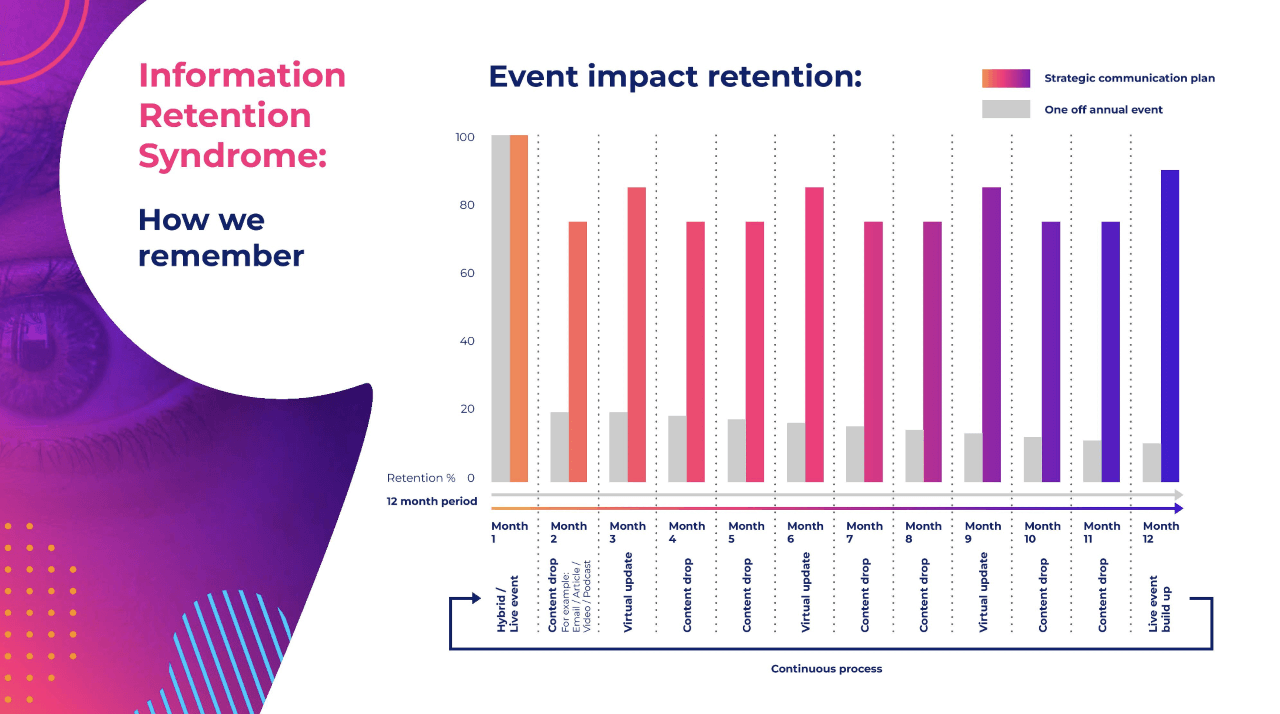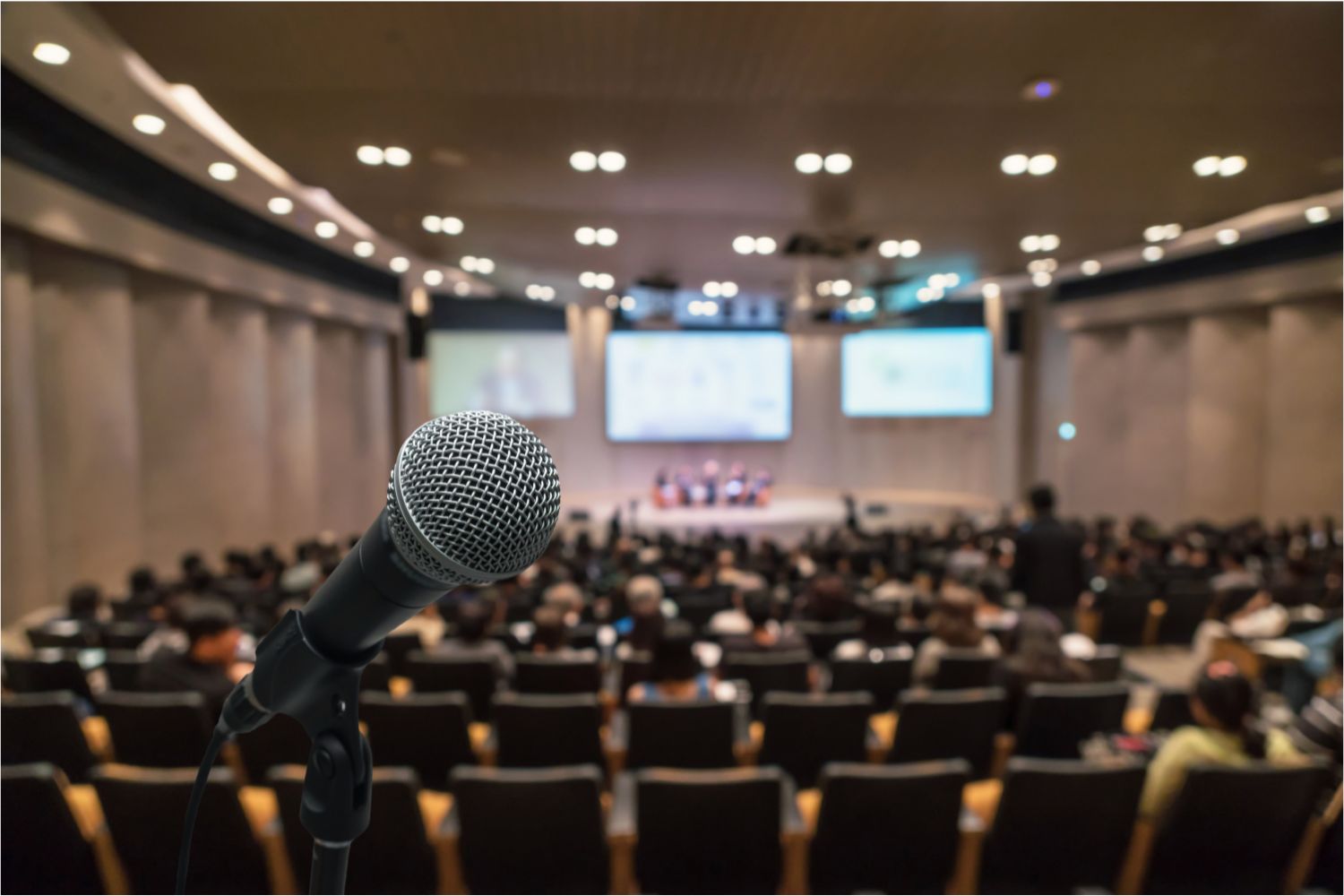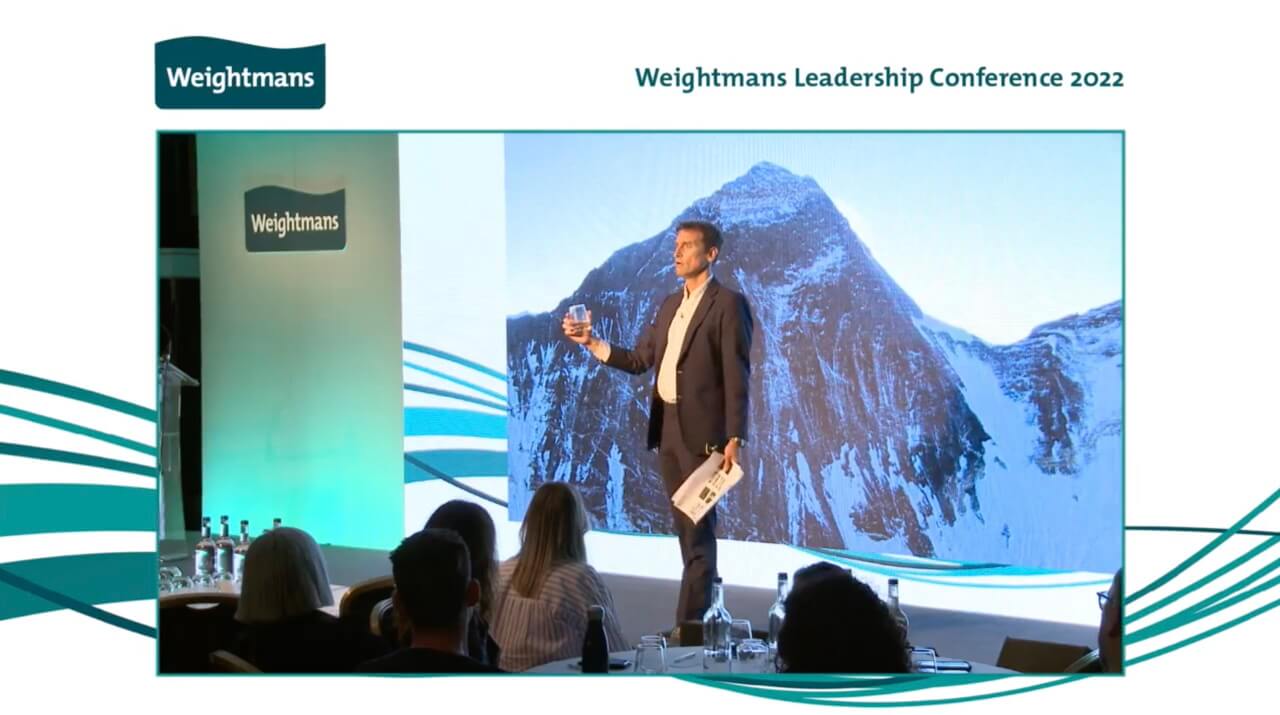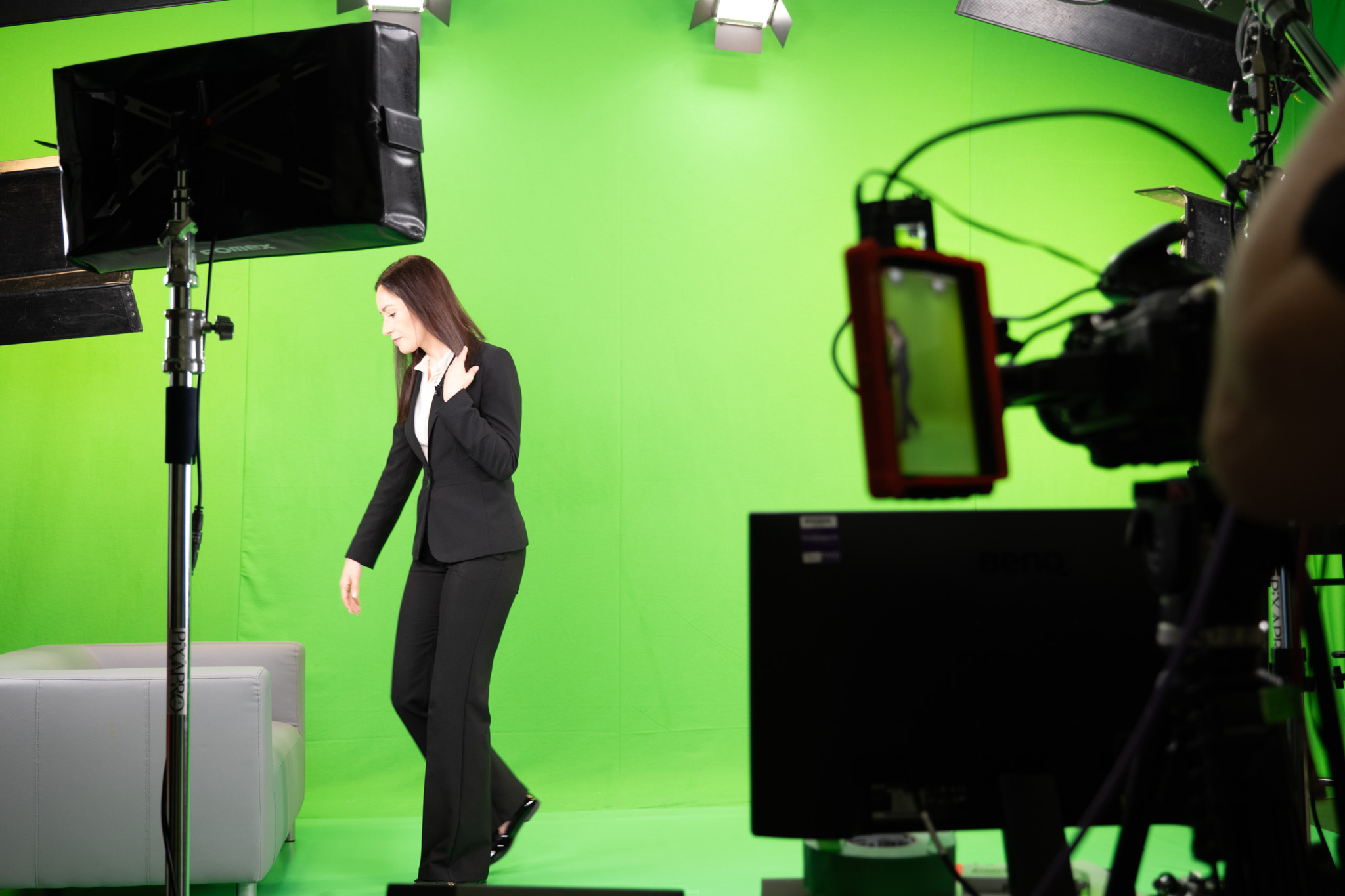Planning a successful event usually starts with outlining your strategic goals. Whether your desired outcome is to increase sales, boost employee engagement or drive change, understanding the effects of attention retention syndrome can have a real impact on results.
Planning a successful event usually starts with outlining your strategic goals. Whether your desired outcome is to increase sales, boost employee engagement or drive change, understanding the effects of attention retention syndrome can have a real impact on results.
It goes without saying that engaging content and high production values are vital for delivering a great event, yet the biggest indicator of success is often how well attendees remember the experience and how much information they manage to retain afterwards.
Attention retention syndrome is all about how quickly new information is forgotten. Did you know that the most people forget an average of 50 percent of new information within a day and 90 percent within the first seven days?
That is according to pioneering 19th century German psychologist, Herman Ebbinghaus, who discovered the ‘Forgetting Curve’ as part of his experimental study of the memory. The theory behind the ‘Forgetting Curve’ is relatively simple; without regular reinforcement, the average human will only remember around 10 percent of new information within the first week of hearing it and this will continue to dwindle over time.
Ebbinghaus’s theory is as relevant today is it was back in 1885, particularly when it comes to events, and understanding how the memory works can be a valuable asset for event organisers. So, how can event organisers use the ‘Forgetting Curve’ to avoid attention retention syndrome when developing an events strategy?
Incorporate Spaced Repetition to Improve Information Recall
Spaced repetition is vital for marketers who are aiming to create any real behavioural change. Telling your audience important information only once, during a one-off event, isn’t enough if you want them to really learn, understand and remember something in the longer term.
Did you learn how to drive or how to speak a new language in just one session? Of course not, it takes repetition to help our memories to retain knowledge and new information. In the same way as learning a new skill, communications and events need multiple touch points and sustained follow-up to make sure audiences really remember the things you want them to.
The process may start with one event but the most effective way to drive home key information is through a series of focused events and regular communication.
Prioritise Audience Engagement:
Whether you’re delivering a large-scale global conference, a sales kick-off or a virtual training session, the more interested and engaged your audience is, the more information they are likely to retain post event.
Keeping the attention of delegates is one of the biggest challenges facing speakers during events and even more so when the format is virtual. This is why virtual presentations should always be kept shorter and more succinct than those being delivered to delegates in the same room. When addressing a remote audience, try not to speak for more than 10 minutes without encouraging some form of audience participation. This could be as simple as a quick poll or an interactive quiz.
Hybrid events should feature specific content geared towards engaging virtual attendees to complement the experience of delegates participating in-person. Whatever the event format, engaging content will always be more memorable than a dull presentation.
It’s not rocket science but the ‘Forgetting Curve’ and the impact of attention retention syndrome can be a useful tool when planning events. We always keep this in mind when supporting clients with developing and implementing event strategies in order to generate a higher return on investment. Why not speak to our team for advice on your events strategy?
Find out more on how Virtuopo can help your business by contacting Chris at Virtuopo on 0151 662 0275 or email chris@virtuopo.com.





